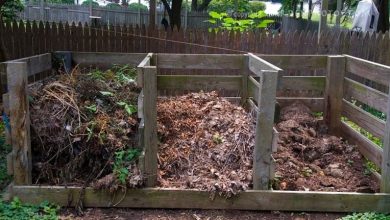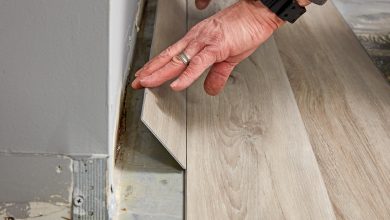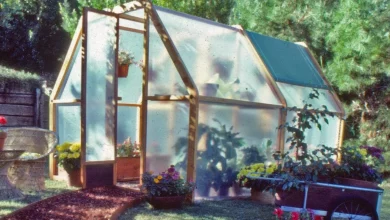Transforming your Space with a DIY Wardrobe
Making the Most of Your Storage Space
Are you looking for creative ways to maximize storage in your home without breaking the bank? A custom-made DIY wardrobe could be the perfect solution. Wardrobes are versatile pieces of furniture that allow you to corral clutter and make the most of vertical real estate. Whether you’re working with a small bedroom, need to spruce up a dull corner, or simply want a specialized storage solution, building your own wardrobe is a rewarding and affordable DIY project.
DIY Wardrobe Kits: A Convenient Start
For those looking for an easy entry point into wardrobe building, a DIY wardrobe kit can take much of the planning work out of the process. Kits include all the pre-cut wood panels, hardware, and instructions needed to assemble a basic wardrobe frame and add hanging rails and shelving.
Some popular options for DIY wardrobe kits in Australia include:
IKEA Pax Wardrobe System – A modular system allowing for custom configurations. Panels clip together for simple assembly. Affordable starting price.
Bunnings DIY Wardrobe Kit – Kit contains MDF panels and hardware to build a basic wardrobe frame. Beginner friendly instructions.
Woodworkers DIY Wardrobe Kit – Higher quality kit uses real timber (pine). Includes pre-drilled panels, rails and detailed plans. More durable long-term option.
Kits provide a low-stress starting point to gain skills and confidence for more advanced custom projects. Measure your space carefully to select the appropriate kit size. Allow extra time for sanding, priming and painting panels yourself for a tailored look.
DIY Wardrobe with Doors: Adding Function and Style
Ready to take your DIY wardrobe to the next level? Focus on including functional wardrobe doors to fully contain clutter. Hinged or sliding doors offer convenient access while concealing the interior from view.
When building a wardrobe from scratch, plan door placement within the dimensions of your project. For hinged doors, allow space for the door to swing open fully without obstruction.
Some door options to consider include:
Framed Panel Doors – Construct a simple frame and mount a flat panel like plywood or boards for a clean look.
Louvred Doors – Horizontal slats allow airflow while maintaining privacy. It can be installed flush or in an overlapping frame.
Barn Doors – Sliding doors mounted on an overhead track for a trendy aesthetic. Requires a wide track mounted to the top frame.
Mirrored Doors – Full-length mirrored panels offer a deceiving sense of more space. Just be aware of potential additional weight.
Be sure to include quality brass or nickel door hinges, pulls, or knobs suited to your style. Reinforce door edges as needed to prevent warping over time.
Building a Wardrobe from Scratch with Plywood
Marine-grade plywood is an affordable, durable, and termite-proof material for constructing a wardrobe frame from scratch. Its smooth and stable surface also provides a blank canvas for creative panel treatments like painting or wallpapering.
When working with plywood:
- Measure and mark all cuts precisely using a tape measure and a straight edge or speed square.
- Secure panels together at corners using wood glue and pocket hole screws or brass corner brackets.
- Reinforce wardrobe back, bottom, and sides with diagonal or X-pattern bracing to prevent racking.
- Sand all surfaces smoothly with 120-grit sandpaper before priming and painting for protection.
Some plywood wardrobe construction tips:
- Use 3/4 inch or thicker material for structural rigidity.
- Cut doors 1/4 to 1/2 inch narrower than the frame opening for a flush fit.
- Drill pilot holes to prevent wood splitting during screwing.
- Prime all surfaces, including bracing them inside the frame.
With patience and attention to detail, you can transform affordable plywood boards into a beautiful custom storage solution tailored to your unique space.
FAQs about DIY Wardrobes
1. How much does it cost to build a wardrobe from scratch?
The costs will vary depending on materials, sizes, and finishing details. As a general guide, budget around $300-$600 for a basic wardrobe built from plywood or timber boards. This covers materials like 3/4″ plywood, wood glue, pocket hole joinery kits, hinges, handles, and hardware. Factors like door styles, primer/paint, and moldings can increase costs. DIY wardrobe kits start from around $150 and up.
2. What makes a wardrobe a wardrobe?
While styles may vary, the key aspects that define a wardrobe are hanging rails, rods, or shelves for storing hanging and folded items vertically. This optimizes the height of the unit. Doors help contain and conceal items within the frame. Wardrobes are usually freestanding furniture pieces designed specifically for clothing storage.
3. How do I start a simple wardrobe?
Begin by measuring the space and sketching a basic blueprint. Cut 3/4″ plywood or boards into panels for the sides, top, bottom and doors. Join pieces at corners and reinforce backs/sides. Add hanging rails, shelving and basic hinges, handles. Sand all surfaces smoothly before priming and painting for a finished look. Start small and add detail as skills develop.
4. Is it cheaper to build your own wardrobe?
Generally, yes. While materials cost around $300-600 depending on size, a DIY option allows you to customize size, shape, and features to perfectly suit a space. An equivalent custom-built or flatpack wardrobe retails from $500 up. Building skills over time means future wardrobes cost even less. Wardrobe kits provide good value from $150. Overall, DIY is more affordable if you factor in the resale value of a unique handmade piece.
5. How can I make my wardrobe look expensive?
Pay attention to finish details like plinths/moldings, polished wooden knobs instead of plastic pulls, mirrored doors, and quality hardware. Stain or paint the wood a rich tone and apply a protective lacquer. Add thoughtful features like built-in lighting, drawers, or open shelving. Use premium plywood or solid wood boards rather than MDF. Consider custom touches like engraving or brass inlay work. Most importantly, take your time for precision cuts, joints, and smooth sanding so it has a seamless, high-end finish.
6. How many clothes do you need for a wardrobe?
The typical amount of clothes needed is 7-10 days worth of outfits. However, this will vary greatly depending on an individual’s lifestyle, job, and fashion preferences. As a general guide, aim for:
- 5-7 tops (shirts, blouses, etc.) per week
- 2-3 bottoms (pants, skirts, dresses) per week
- 5-10 pairs of socks and underwear
- 2-4 pajamas/loungewear
- 3-5 outerwear pieces (coats, jackets)
Leave plenty of room for off-season clothing storage too. Build modular shelves/racks for versatile use of space.
7. How can I DIY my wardrobe with plywood on a budget?
Start with affordable 3/4” AC plywood or MDF boards cut to size for the frame. Join panels simply with wood glue and corner braces. Add practical shelves made from unstained boards or skip shelves entirely. Focus spending on a quality primer and paint in a light, bright hue to disguise imperfections and give a polished look. Fit inexpensive metal or plastic knobs rather than pulls. Attach basic swing-arm hangers along a center aisle rail for maximum capacity. Consider creative details like stenciled numbers above shelves to add character without cost. With care and smart materials, you can build an attractive wardrobe stylishly on a shoestring budget. The results will be a tidy storage solution you’ll love for years.



